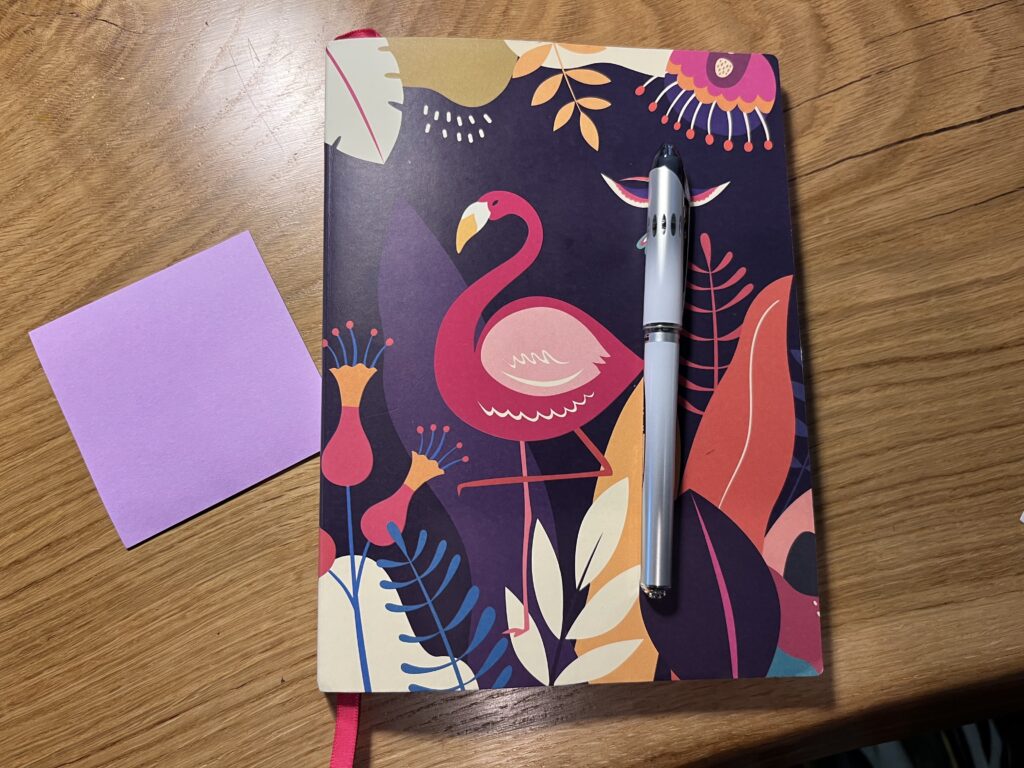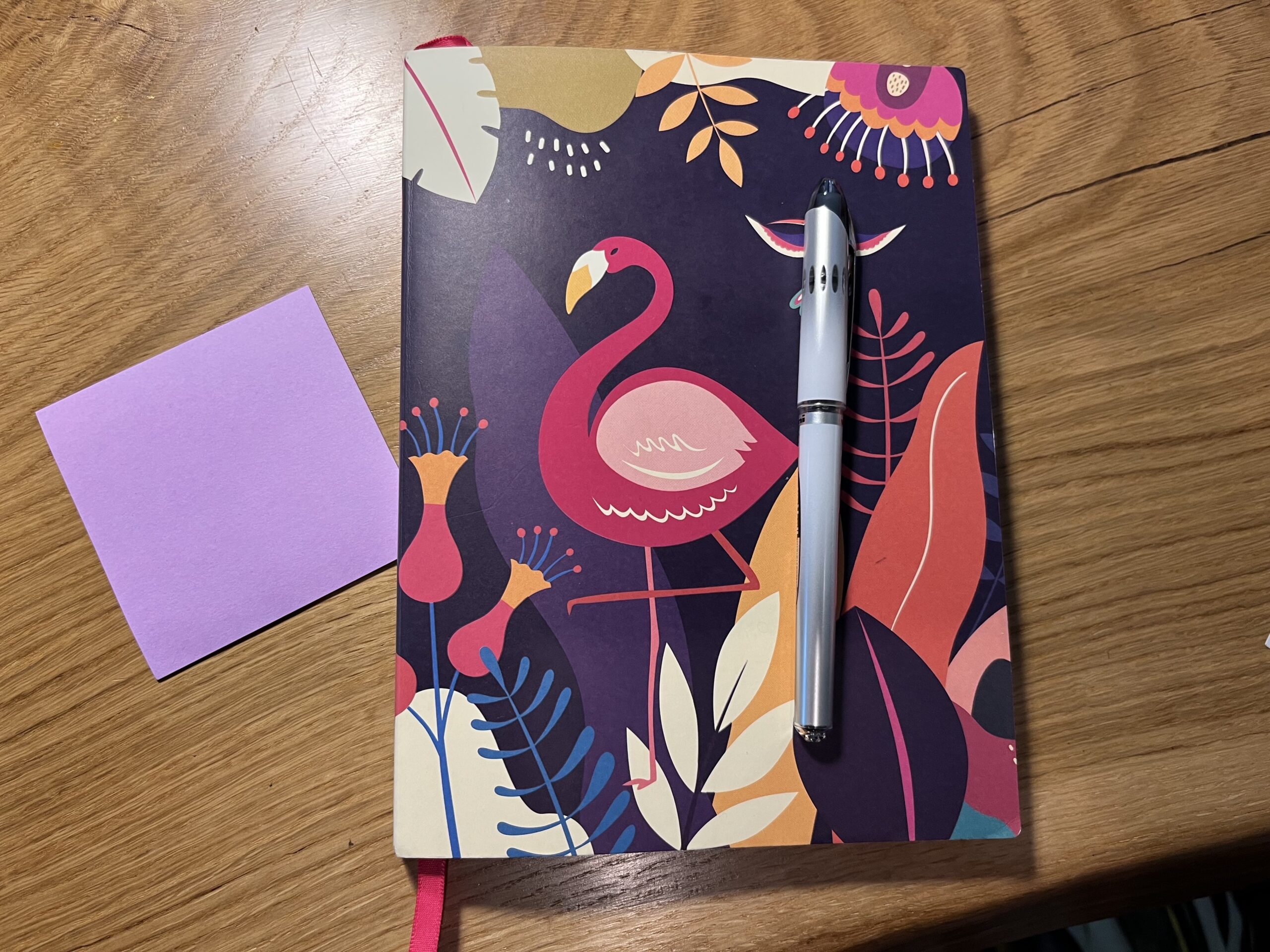As an entrepreneur, do you journal? Whether you choose personal or professional journaling, or a hybrid, here’s the entrepreneur’s guide to journaling.

I’ve journaled for over forty years. In the beginning, it was Dear Diary with big loopy letters, for a long time, it was narrow scratch with intensity as I built the business I thought I wanted. Then, journaling became the respite FROM the business. Now, as a hybrid, I both journal for business and personal (although not in the same journal.) I’ll share a few methods and some resources from other experts on the power of journaling.
It’s a to-do list. If you have a business journal (or a business book), you might have a list of things you need to do or have done. I also take client meeting notes in these journals – and they range from hardbound lined notebooks to spiral bound promotional ones from printers and conferences. Clients produce them as promo items, and I love it when they do!
For client gifts, journals with a thermal coffee tumbler (or just the coffee!) is a wonderful way to tell a client “I’m so happy you’re with us.” Especially if you offer tips on how they might consider using it.
Speaking of that, here are some things I use that I’ve gotten from professionals about the power of journaling:
Write every day.
Your journal is a safe place to put your hopes, fears, dreams, anger, frustration and ideas.
Use bullets if you like, paragraphs if you don’t.
Colored pencils or fancy pens – it’s up to you
Draw if you want. Use stickers, post-it notes or flags.
Use your journal to create a scenario in the future that you’d like to step or grow into. A third person narrative helps us assimilate things we can’t yet see for ourselves but might envision if it were a little more removed.
Use a journal to keep a list of tasks and client notes
Use your journal to plan your annual business goals and refer to it often (use a bookmark, the ribbon that comes with it, to mark your goals pages.)
I use a small hair claw clip to hold my bound journal notebook open when I’m in a section where it wants to close up on itself.
Start and end your personal day – and your work day – with your journal/business notebook. Check off your accomplishments, write in what you’d like to do tomorrow and you FELT about the day.
Select a goal per week or per month to work toward and track your progress using your journal entries
I’ve journaled more personally than professionally but I’ve kept a business notebook for decades without really seeing it as a powerful tool to help me stay on track with my business. I say stay on track, because I’m not (anymore) interested in wild growth. I want the business to stay about the same size, increase profitability and work with really nice clients on projects that make my heart sing and maybe beat a little faster. So those are the things I write down as larger goals, which get broken down into very detailed tasks!
How to get started with journaling for business
Get a notebook – whether it’s the one your bank sent you (not kidding!) or one a client sent you or one a vendor sent you with spiral bound edges, a journal should speak to you – you can go fun with a spiral bound with fun cover design, or more understated with a bound book with embossed cover. Just get one that you like.
Get nice pens or pencils. Ones that you like. I prefer the Uniball Vision Elite .07mm in black – a thick, bold stroke for a pen – but whatever you like, use that. I have colored pencils (but people at home keep taking them) as well.
Your opening page should be what you want for your business, preferably a few paragraphs.
Each day, start your workday with a short one paragraph entry of what you want to work ON your business (not just in it) before you write your task list.
Each close of business day, write how you FEEL about the day, not just crossing off what you did (or did not) accomplish. Move any tasks to tomorrow, but do that TOMORROW.
I read a lot and several authors have dived deep on journaling. Here are a few things I learned that work well for me:
Use a third party person narrative to create scenarios that you might want to happen in the future (she did, she will. Third person gives you a little distance. If you feel comfortable, write in first person, but in the future (I am, I will).
Don’t over think the journal. Write what comes to mind.
Date your journals (first page) and last page so when you need to go back later, you can find it. Use different journal colors or styles each time (if you’re a visual person and need to remember “It was in the green MSUFCU one” later. If dating works well for you and you keep them in order on a bookshelf in your office, that’s fine too. You can date the covers or spines too.
Use a ribbon or post it flag to mark your quarterly business goals so you can go back and see how you did!
What can you expect from a journaling practice?
A clearer picture of what you love about your business and what you hate about it. I spent many years (maybe more than a decade) hating business life, and feeling like I was in jail with the door open. Turns out, I just needed a business focused more on who I was authentically. Took me a while (I’m stubborn!) but I finally figured out WHAT I wanted – because of journaling – and now my business is a happy place for me. I no longer have the ‘Sunday scaries’ – and look forward to my work days.
You’ll also stay on track with the things you should do, not just those that are urgent crises, but those advance YOUR business goals. This goes back to the Four Quadrants (Covey) exercise.
Will you journal for business? Would you like some journal prompts? Download this free journal prompts guide (personally designed by me!)
Resources for journaling and living a happier business life:
WSJ: How Journaling can help you live your best life
Benefits of journaling on mental health
Almost anything by Gretchen Rubin (author)







